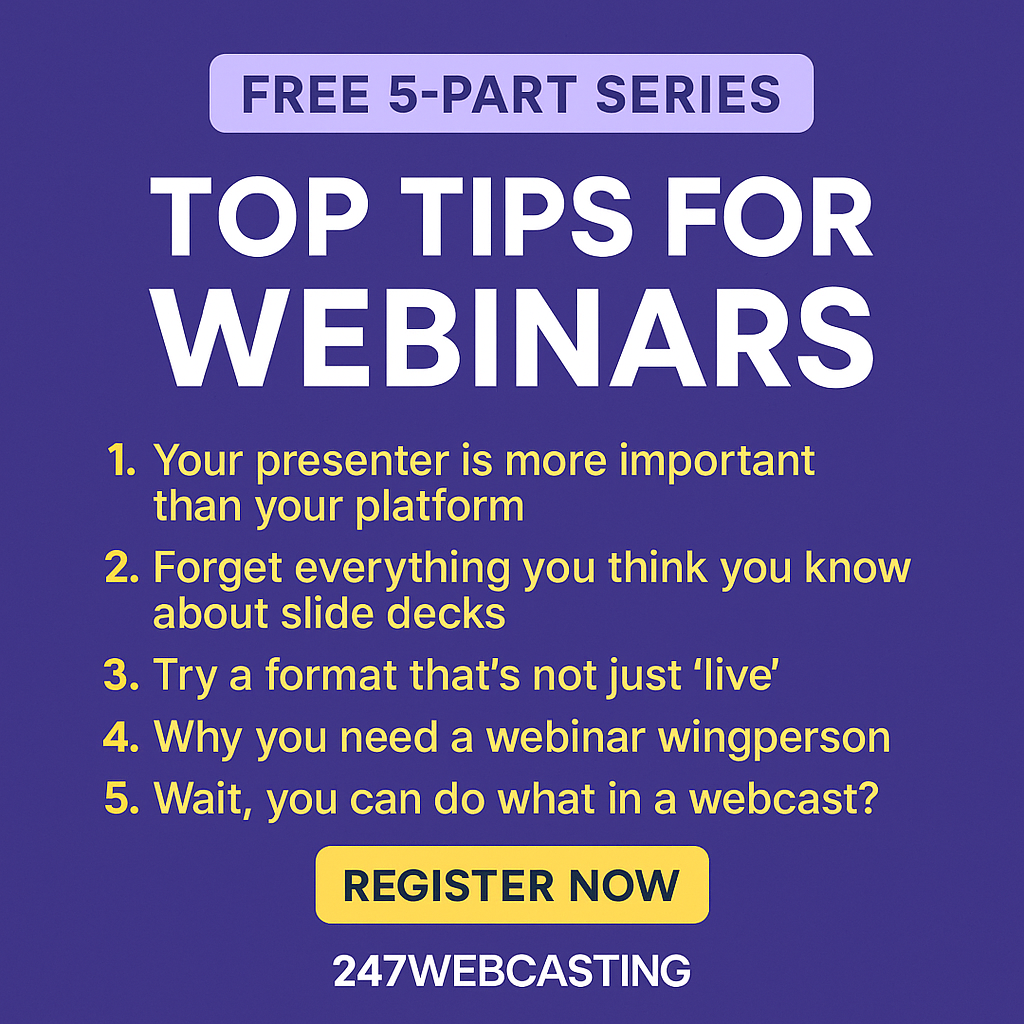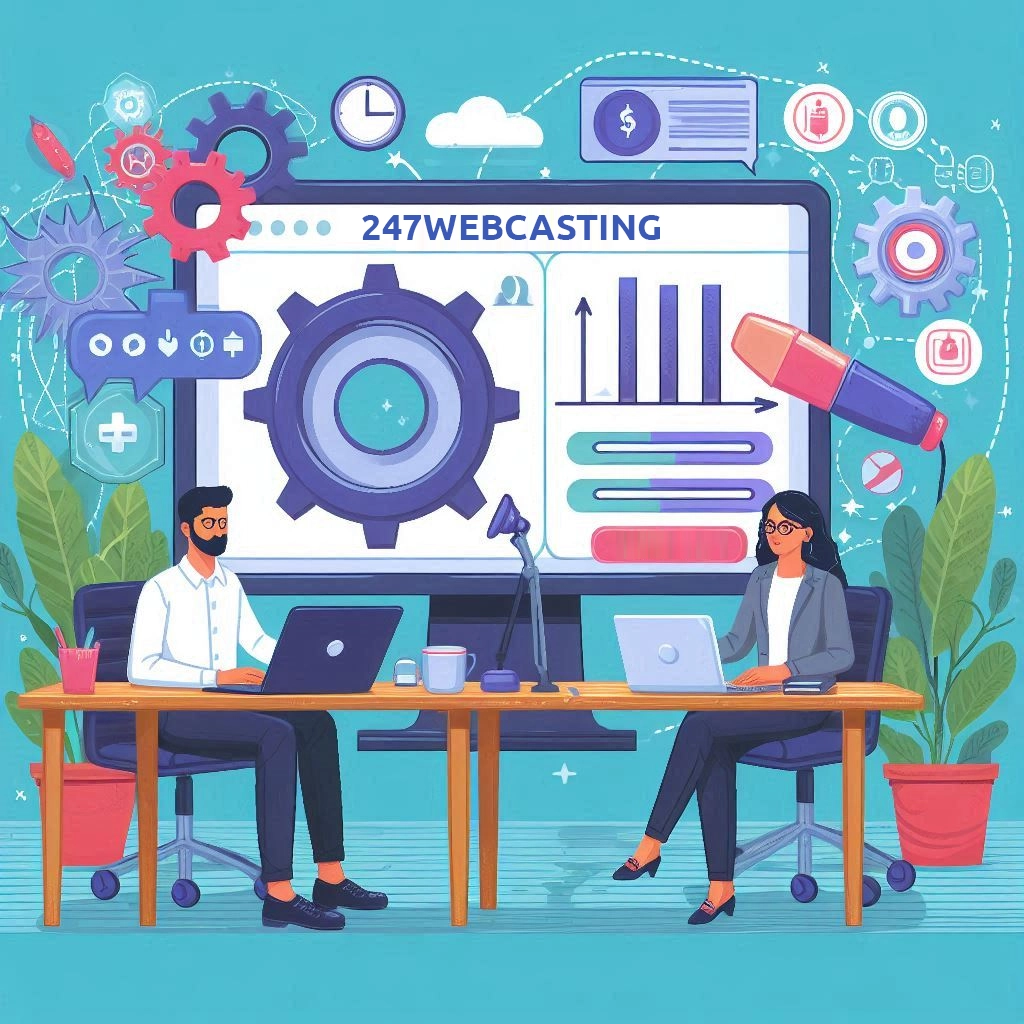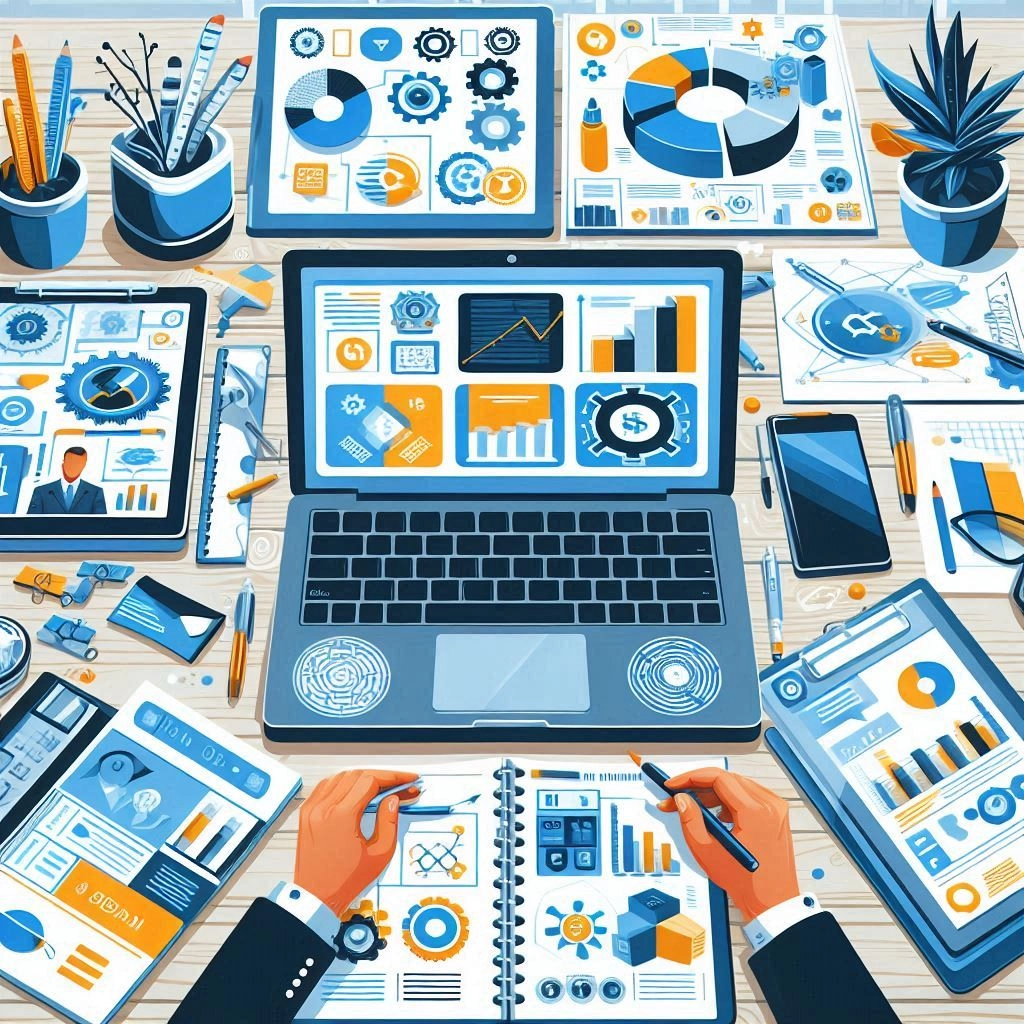In order to achieve a successful webinar, you should prioritize planning and execution first and foremost. Of course, it takes time from start to finish and it involves great team coordination.
A webinar that’s well-planned and well-presented is also the product of weeks (or months) of preparation not just of the presentation materials, but of the people behind the event.
A seamless webinar is possible only if you put a lot of effort into it. To help you achieve this goal, here are the 10 key steps you should follow:
(1) Create an action plan
When you plan for a webinar, an action plan should be in place since it is the foundation of the planning process. Laying out the tasks of each of your team members is included in this phase up to the post-presentation activities.
Your checklist of to-dos should include the following:
- define your goals – jot down the things you want to achieve out of each particular webinar (is it for training new people in your team, to educate new customers, to share information, etc.)
- define what you can deliver – based on your goals, scope out and define the topic you’ll cover on your presentation
- establish your presentation format – choose the best format for your topic and presenter, and make sure that it supports your goals
- identify your audience – get to know their time zones, nationality, and language for promotion and development of your webinar console
- identify your team – this will depend specifically on your needs and presentation; identify who will help you on the front and back ends of your webinar
(2) Initial team meeting
Call a meeting with your team to disseminate the plan and to set a timeline. Make sure that each member is able to commit on this webinar. Send out an email recap of everything you covered during the meeting.
(3) Create content for your presentation
A compelling content is the core of a webinar presentation. It should have a great title and list of benefits that will catch the attention of potential viewers. Start with an abstract to help your copywriter. Also, provide an outline for your creative team to help them craft the visual elements of your presentation.
(4) Develop marketing strategy and deliverables
You need to develop your marketing deliverables which are part of your strategy to maximize audience registration. Craft a unique and compelling landing page that will drive registration, and develop promotional emails for invitation, confirmation and post-webinar purposes.
Create a great banner for your webinar and post it on your homepage for your visitors to see. And if you have a sales team, they can create and invest on one-to-one sales emails to get more viewers.
(5) Set-up your webinar infrastructure
Your production team will be able to develop a webinar platform at this stage. You can start by choosing the event type and setting the live date. Import your copy and creative elements to the landing page and create the confirmation emails and reminder flow. Make sure your tracking codes are in place – this could mean having integration with a CRM or marketing automation program which makes importing of registration data a lot easier.
Test your webinar infrastructure by having sample registrations to check confirmation emails. Test your landing page in different web browsers and fix any tech-related glitches.
(6) Promote your webinar
Your webinar promotion begins once you’ve established and polished your infrastructure. So, where do you start promoting?
- Drive webinar registration via email. Start with your database of prospects by sending them a well-written, customized email for this event.
- Create and place a banner or display ad on your homepage to show visitors of the up and coming event. You can also craft a short content for your ‘events’ section.
- Use the power and reach of your social media networks. Each social media platform you use should have its own content and link to the registration page.
- If you have friends in the online world and they have their own websites or blogs, you can create a customized email for them to send to their own subscribers.
- Involve your invited speakers and sales people to send the invitation emails to their own contacts.
- Send internal invitation emails to your team and tell them to invite their contacts as well.
(7) Initial dry run
Do the dry run at least ten days before your webinar. If your presenter is not part of your team, this will give him time to develop slide presentations. Dry runs help catch issues, so you and your team can fix them as soon as possible.
Dry runs also help all parties in seeing the entirety of the webinar – if you and the presenter support the same narrative; if the slide presentations deliver the promise; and if there are overlaps.
During this stage, it’s ideal to update everyone on the viewer demographics. Share the numbers you’ve got during the promotion phase, so your presenter knows which industries your viewers belong to.
(8) Final dry run
A final dry run at least two days from the live webinar should be done to finalize everything – from locking down presentation slides to reviewing the webinar’s registration numbers.
- Make sure everyone’s well-versed with the webinar platform’s technology.
- Locking down presentation slides is key to preventing last minute, and often unnecessary changes to the presenter’s slides.
- Designate, familiarize and have a consensus on: when and how to use polls, who will manage the Q&A, who will manage and how to monitor group chats.
- Test and decide on what communication methods will be used by team members during the presentation. Choose the best method/s based on seamlessness and efficiency.
- Review the final registration based on the number of people, their industries, companies, etc. The presenter should be fully aware and discerning of such information.
(9) Live event presentation
Your call-in time should be at least 30 minutes prior the live webinar to check for any glitches or issues. Make sure your presenter and team members are ready, and ensure there are no items or gadgets that may cause any disturbance.
The designated members who are in-charge of managing live Q&A or chat should be able to address inquiries, especially information about the product or service you’re company is offering. A member of your sales team should also be available to help out with such inquiries.
(10) Post-event activities
Post-event activities are as important as the live webinar. This helps drive additional viewers which may lead to additional revenue for your company. Here are just some of the post-event tasks that you should include in your list:
- Send a ‘thank you’ email to your attendees with a link to the archived webinar and a suggestion that leads them to the next step of the buying cycle. It could be a useful case study or white paper, or a link to your product/service expert.
- Send a customized email to registrants who missed the event. Include the link to the archived webinar for them to easily access it.
- Put into action your post-event marketing strategy. Start with updating your webinar’s landing page to indicate that it is an ‘on-demand’ webinar. Use social media networks to post poll results and/or interesting Q&A excerpts.
- Review your leads and score them prior to uploading into your CRM system. Check for: prospects who stayed throughout the presentation, how they responded to interactivities (polls, surveys, Q&A), and what content they downloaded. Prioritize and load first the best leads into your CRM and task your sales team to generate immediate follow-up.
Successful webinars are well planned and executed by a tight, organized team. It requires time in order to test and fix the flaws before it becomes live. The better you plan and execute webinars, the better results and return on investment you’ll get.



